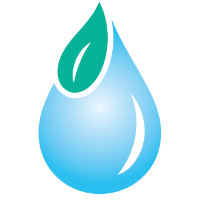Water for Food Global Institute, Daugherty

Daugherty Water for Food Global Institute: Faculty Publications
Date of this Version
11-16-2016
Document Type
Article
Citation
Author(s) 2016.
Abstract
Meeting growing food demands while simultaneously shrinking the water footprint (WF) of agricultural production is one of the greatest societal challenges. Benchmarks for the WF of crop production can serve as a reference and be helpful in setting WF reduction targets. The consumptive WF of crops, the consumption of rainwater stored in the soil (green WF), and the consumption of irrigation water (blue WF) over the crop growing period varies spatially and temporally depending on environmental factors like climate and soil. The study explores which environmental factors should be distinguished when determining benchmark levels for the consumptive WF of crops. Hereto we determine benchmark levels for the consumptive WF of winter wheat production in China for all separate years in the period 1961–2008, for rain-fed vs. irrigated croplands, for wet vs. dry years, for warm vs. cold years, for four different soil classes, and for two different climate zones. We simulate consumptive WFs of winter wheat production with the crop water productivity model AquaCrop at a 5 by 5 arcmin resolution, accounting for water stress only. The results show that (i) benchmark levels determined for individual years for the country as a whole remain within a range of 20% around long-term mean levels over 1961–2008, (ii) the WF benchmarks for irrigated winter wheat are 8–10%larger than those for rain-fed winter wheat, (iii) WF benchmarks for wet years are 1–3% smaller than for dry years, (iv) WF benchmarks for warm years are 7–8% smaller than for cold years, (v) WF benchmarks differ by about 10–12% across different soil texture classes, and (vi) WF benchmarks for the humid zone are 26–31% smaller than for the arid zone, which has relatively higher reference evapotranspiration in general and lower yields in rain-fed fields. We conclude that when determining benchmark levels for the consumptive WF of a crop, it is useful to primarily distinguish between different climate zones. If actual consumptive WFs of winter wheat throughout China were reduced to the benchmark levels set by the best 25% of Chinese winter wheat production (1224m3 t1 for arid areas and 841m3 t1 for humid areas), the water saving in an average year would be 53% of the current water consumption at winter wheat fields in China. The majority of the yield increase and associated improvement in water productivity can be achieved in southern China.
Included in
Environmental Health and Protection Commons, Environmental Monitoring Commons, Hydraulic Engineering Commons, Hydrology Commons, Natural Resource Economics Commons, Natural Resources and Conservation Commons, Natural Resources Management and Policy Commons, Sustainability Commons, Water Resource Management Commons


Comments
Hydrol. Earth Syst. Sci., 20, 4547–4559, 2016 www.hydrol-earth-syst-sci.net/20/4547/2016/ doi:10.5194/hess-20-4547-2016